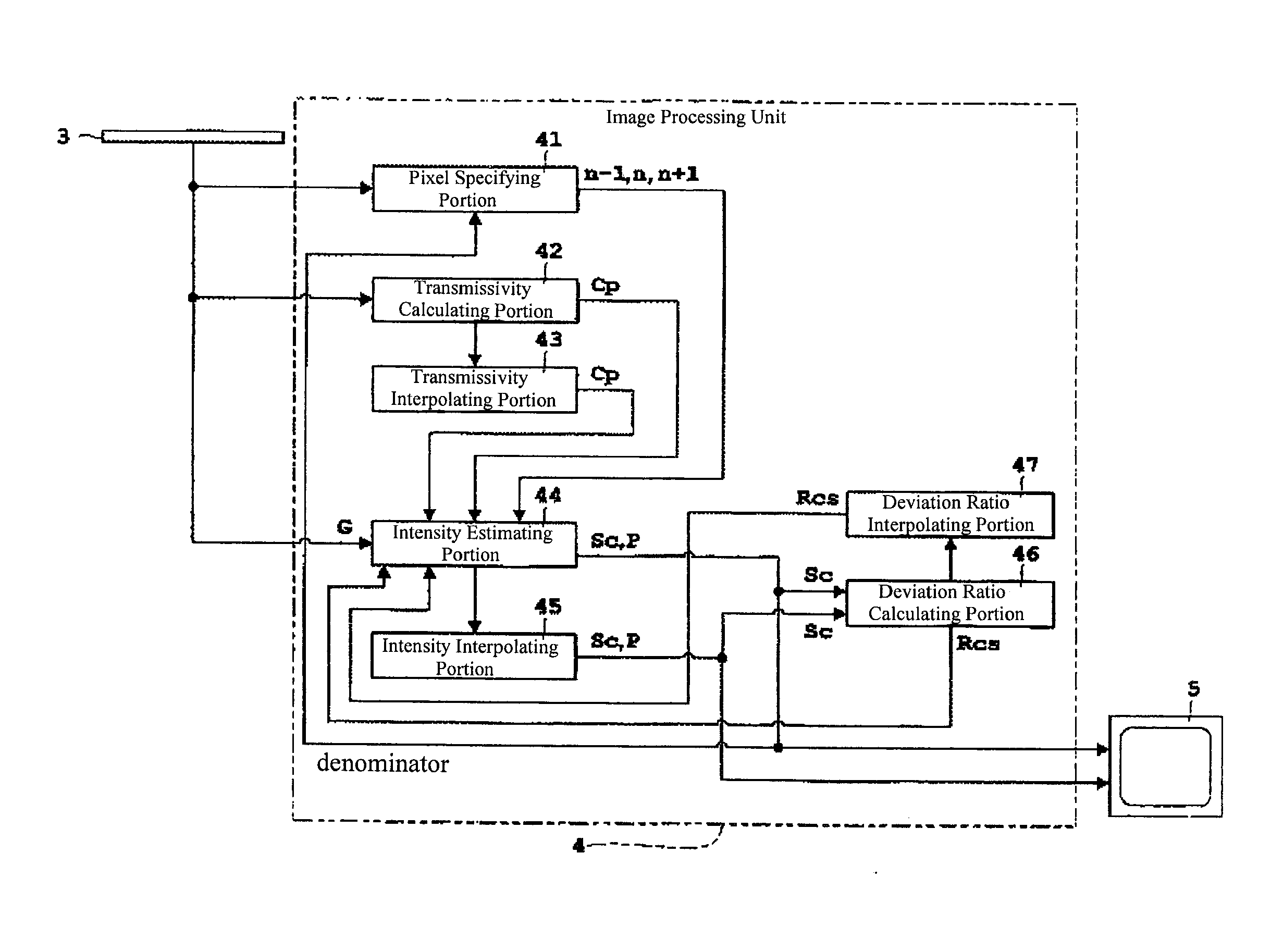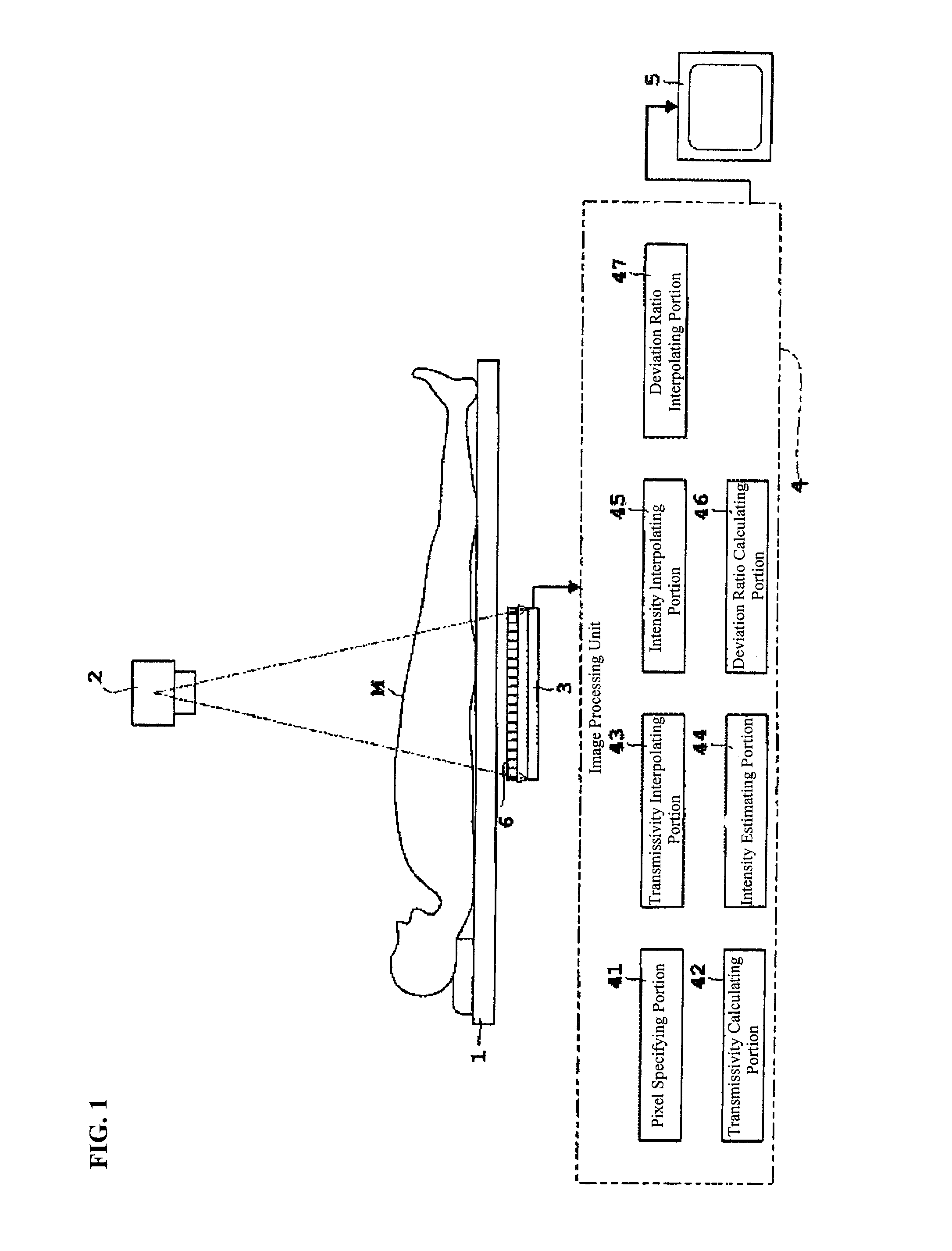Radiography device
- Summary
- Abstract
- Description
- Claims
- Application Information
AI Technical Summary
Benefits of technology
Problems solved by technology
Method used
Image
Examples
Embodiment Construction
[0054]A first example of embodiment according to the present invention will be explained below referencing the figures. FIG. 1 is a block diagram of an x-ray radiography device according to the first example of embodiment, including the second example of embodiment, described below; FIG. 2 is a schematic diagram of a detecting surface of a flat panel-type x-ray detector (FPD); and FIG. 3 is a schematic diagram of a synchronized cross grid. Moreover, in the first example of embodiment, which includes the second example of embodiment, described below, x-rays will be used in the explanation as an example of the radiation.
[0055]The x-ray radiography device as set forth in the first example of embodiment, which includes the second example of embodiment, described below, as illustrated in FIG. 1, includes: a ceiling plate 1 upon which is placed a test subject M; an x-ray tube for emitting an x-ray in the direction of the test subject M; a flat panel x-ray detector (hereinafter termed an “...
PUM
 Login to View More
Login to View More Abstract
Description
Claims
Application Information
 Login to View More
Login to View More - R&D
- Intellectual Property
- Life Sciences
- Materials
- Tech Scout
- Unparalleled Data Quality
- Higher Quality Content
- 60% Fewer Hallucinations
Browse by: Latest US Patents, China's latest patents, Technical Efficacy Thesaurus, Application Domain, Technology Topic, Popular Technical Reports.
© 2025 PatSnap. All rights reserved.Legal|Privacy policy|Modern Slavery Act Transparency Statement|Sitemap|About US| Contact US: help@patsnap.com



